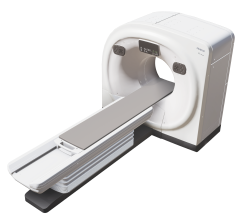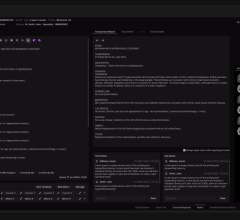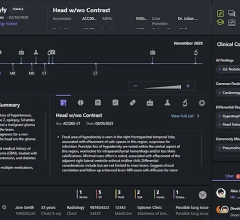
Radiology, along with nearly every other department in the hospital, has evolved working independently with its own procedures, forms, systems, software and data storage. As we know, this silo architecture prevents information from being immediately accessible to those who need it. In theory, this problem could be solved by placing all clinical information into a central location — but is this the year that could turn theory into reality?
In 2015, we learned more about the role of technological advancements in the field of healthcare than ever before. These advancements reach beyond the walls of cardiology and radiology as we traditionally think of it, bringing in information from departments across the continuum of care to create a holistic view of our patient. Emerging technologies such as the vendor neutral archive (VNA) have enabled us to gain agility and flexibility from both an IT and a business perspective.
From a clinical perspective, however, it’s all about changes in imaging. Healthcare imaging is transitioning. Historically, cardiology and radiology have been thought of as DICOM imaging, and only DICOM imaging. However, with the rise of enterprise imaging, image storage and viewing, including cardiology and radiology, have the potential to become part of a technical infrastructure that works toward patient-centric care.
There have been several contributing factors to the rise of enterprise imaging. The greatest factor, perhaps, is the industry’s increasing need to improve care through increased patient engagement. Healthcare needs a system that can manage patients and still allow the patient to be at the forefront of it all. Additionally, enterprise imaging has proven successful at academic institutions and centers of excellence such as Duke University and the Mayo Clinic, alleviating fears and helping to establish the concept in reality. The past year has seen more and more people in the industry growing open to implementation of an enterprise imaging strategy, and the next year will see more implementation as the product adoption begins to include a larger audience.
What is a VNA?
The VNA is a combination of three vital components: storage, software and a viewer. The key aspect of a VNA is that it truly is a vendor neutral storage platform which can accept, store and view information from any relevant file type and from any vendor. In addition to this, the VNA should be the hub of data storage and its software should afford access to patient information through a zero-footprint, Web-based tool. This will allow the facility to take advantage of both the agility and cost containment that comes with a VNA solution.
The VNA also solves the increasingly common problem of tying in a new merger or acquisition, a new physician group or a new hospital. It gives you one connection point for IT and flexibility in replacing the viewing component of the picture archiving and communication system (PACS) without having to migrate data.
A Changing Landscape
Traditionally, hospitals have only been concerned about the management and storage of their own data, but as the healthcare landscape is continually shifting, many hospitals are growing beyond the walls of their facility through rapid expansion and by forming relationships with other hospitals and physician groups. As healthcare organizations become associated with additional care providers, they may accept responsibility for their image acquisition.
In addition to growth, current legislation along with economic forces on the healthcare industry require healthcare providers to repeatedly innovate and do more with less all while improving patient care. One way in which healthcare providers can improve is through patient engagement during the healthcare process. Part of the overall trend in healthcare is to build away from episodic treatment of a condition to one individual body part and more toward whole treatment — away from fee for service and more toward wellness care. This is complementary to the overall trend in healthcare to treat the patient and not the condition. As doctors allow patients to have control over certain portions of their healthcare such as monitoring themselves and contributing to their own care, this is an important step in the transition. To augment this, the ability to capture an image remotely and have it stored in a central, secure location that is accessible by physicians anywhere lends to these forward steps in treatment. As you can see, these advancements are dependent on a central, non-proprietary data archive.
The Hand of Government
While some can argue that healthcare would be better if left alone by the federal government, it undeniably uses its hand to push the industry forward. A key example of this is the implementation of the electronic health record (EHR). Billions of dollars have been poured into EHRs and various resources have been tied up for the last three to five years implementing them nationwide due to federal initiatives and incentive programs.
As a result of this, there is a little fatigue from an IT perspective, but once a facility installs the EHR, they realize that there is a component that is being left off out of the equation. They realize that there are departments that are not being serviced by the EHR and that the EHR may provide textual information to clinicians, but it does not incorporate that 30 to 40 percent of all medical information that is generated through imaging. Imaging is a component that completes the electronic medical record for a holistic, patient-centered look at healthcare. The question for healthcare providers who have EMRs has been, “How do I make imaging a part of our EMR?” The solution to this problem goes back to sourcing a VNA that allows you to migrate and store all imaging information in a patient-centric view.
Early Adopters and Entering the Second Tier
Several leading institutions have been working through the early phases of adopting, implementing and using and enterprise imaging solutions. As the industry has learned from their successes and failures, it is now time for healthcare providers to move in the second tier along the adoption curve. This path of implementing an advancement in technology is similar to the trend that PACS went through 15 years ago. It started at only major academic institutions, then centers of excellence, and then it spread to the rest of healthcare providers.
Although the trend is similar to that of the PACS implementation, the approach to implementation is very different. Enterprise imaging requires an understanding of the entire organization and the workflow of each department. For example, radiology workflows cannot be easily laid over that of a non-DICOM environment and we have to be sensitive to the fact that these departments do not want to change their workflow. We have to embed our enterprise imaging strategy into their current workflow so that it’s non-destructive.
2016 and Beyond
Enterprise imaging strategy will become more of a permanent fixture at healthcare facilities throughout the nation. This ideology will soon be found in large institutions and small community hospitals. This expansion of enterprise imaging is a macro trend. It is a key piece of the IT infrastructure that affords the ability to integrate and promote interoperability between multiple sites. It promotes communication in the care continuum inside and outside the walls of the hospital.
An increased use of enterprise imaging will certainly prompt change in healthcare. The need for tedious data migrations will disappear as healthcare is absorbed into the digital cloud. Healthcare IT vendors will be forced to hold a smaller role in data management, placing more power with the providers. This, in turn, will force healthcare providers to innovate beyond what the industry knows. For years, providers have been forced to play by rules set by vendors, but with vendor neutral data, providers will be free to come up with their own solutions to progress.
Moving forward, the industry must focus on improving the workflow. Not only the imaging workflow, all parts of the care continuum must be considered in order to achieve this dream of a complete enterprise imaging strategy. If we truly want to refocus the general trend of treating a body part by demonstrating care of the whole person, then there is no better way to do that than to bring all patient data under one umbrella where it can be accessed and monitored safely. Will 2016 be the year that radiologists leave the dark, isolated room and become a more visible part of patient care? Let’s wait and see.
Related Enterprise Imaging Content
RSNA Technology Report 2015: Enterprise Imaging
VIDEO: Creating an Enterprise Imaging System
Strategy is Key to Enterprise Imaging Success
Deconstructing PACS in Developing Enterprise Imaging
What is Vendor Neutral Anyway?
An Ounce of VNA Strategy is Worth a Pound of Remediation
Users Will Determine Whether Enterprise Imaging Succeeds
Deconstructing PACS: Point/Counterpoint
Understanding Enterprise Imaging
Mark Watts, CRA, is vice president of healthcare IT solutions at Novarad. He has over 20 years of experience in the healthcare industry, serving as the corporate director of enterprise imaging for IASIS Healthcare and corporate imaging IS administrator for Community Health Systems before joining Novarad. He holds a bachelor’s of science in economics from Portland State University and has studied at the Massachusetts Institute of Technology and the Harvard School of Public Health. He was named in the Top 25 Innovators in Health Imaging and IT and received the Excellence in Imaging Leadership Award from General Electric National. He also co-authored the radiology textbook, Communication and Information Management in Radiology.


 August 06, 2024
August 06, 2024 








